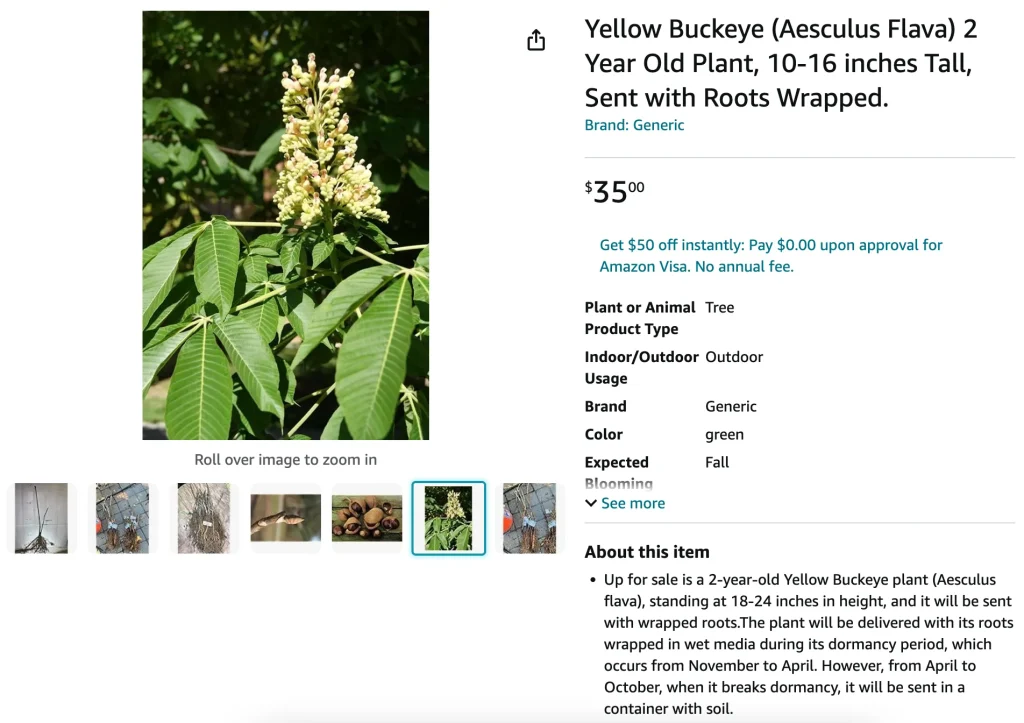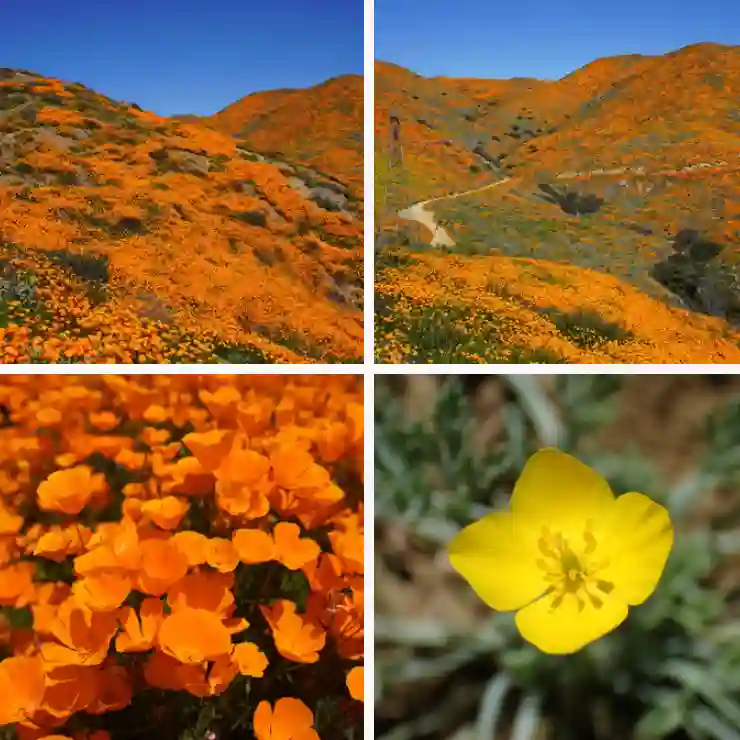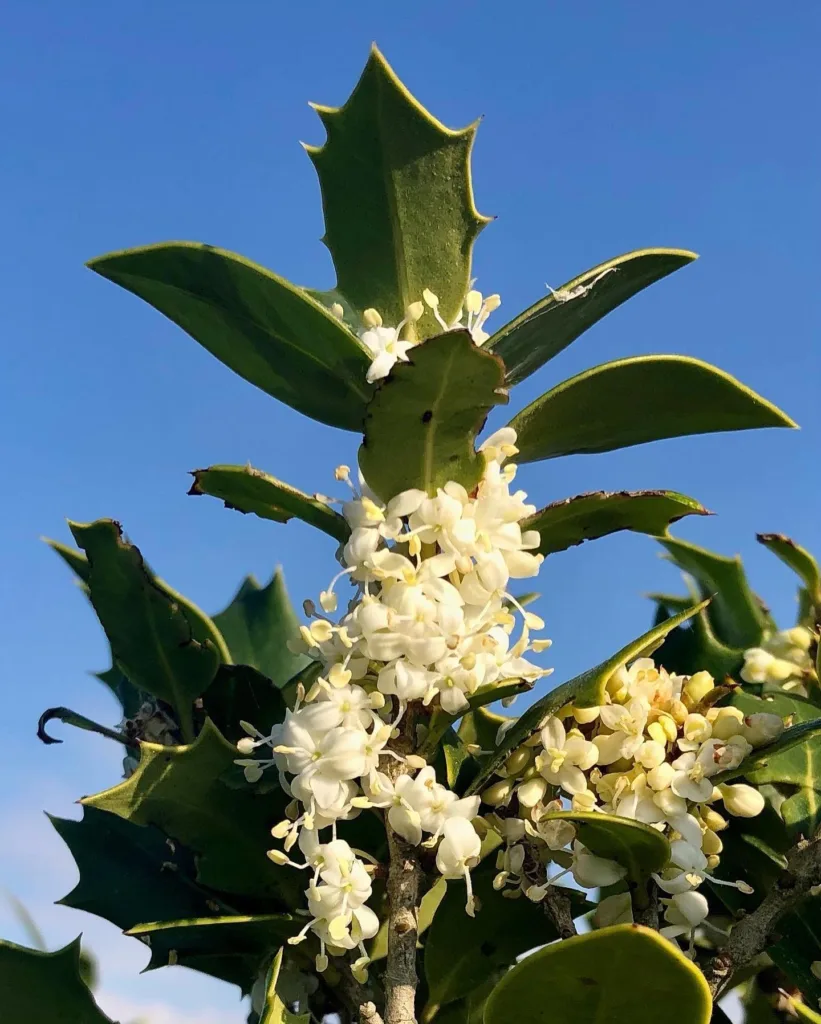
What is Aesculus Flava?
Aesculus Flava, commonly known as the Yellow Buckeye, is a large deciduous tree native to the southeastern United States. It is renowned for its striking yellow-green flowers that bloom in late spring and its distinctive, palmate leaves. The tree can grow up to 50 feet tall and has a broad, rounded canopy, making it an excellent choice for large landscapes and parks.
18 Species in Genus Aesculus
How to Care for Aesculus Flava?
Caring for Aesculus Flava involves understanding its specific needs:
- Location: Plant the Yellow Buckeye in full sun to partial shade. It thrives in well-drained soils, but it can tolerate a range of soil types from sandy to clayey.
- Watering: This tree is relatively drought-tolerant once established, but regular watering during dry periods will help it stay healthy. Young trees need consistent moisture.
- Fertilization: Fertilize the tree in early spring with a balanced fertilizer to promote healthy growth. Avoid over-fertilizing, as this can lead to excessive leaf growth at the expense of flowers.
- Pruning: Prune the tree in late winter or early spring to remove dead or diseased wood. Aesculus Flava has a natural, attractive form, so minimal pruning is needed to maintain its shape.
How to Propagate Aesculus Flava?
Propagation of Aesculus Flava is typically done through seed:
- Collecting Seeds: Gather seeds in the fall once they have matured. They are usually enclosed in a spiky, green capsule that turns brown as it ripens.
- Preparing Seeds: Clean the seeds and stratify them by placing them in a moist medium like sand or peat moss and refrigerating for 60 to 90 days. This mimics the natural winter conditions that the seeds need to germinate.
- Sowing Seeds: Plant the seeds in pots filled with a well-draining potting mix. Keep the soil consistently moist and place the pots in a warm, sunny location. Germination may take several weeks.
What to Plant With Aesculus Flava?
Aesculus Flava pairs well with various companion plants:
- Understory Plants: Consider planting shade-tolerant perennials like Hostas or Astilbes underneath the tree. Their lush foliage and blooms complement the Buckeye’s leaves and flowers.
- Ground Covers: Use ground covers such as Creeping Jenny or Irish Moss to fill the space beneath the tree and prevent weeds.
- Ornamental Grasses: Plant ornamental grasses like Blue Fescue or Maiden Grass around the base to add texture and movement.
Is Aesculus Flava Toxic?
Yes, Aesculus Flava is toxic if ingested. All parts of the tree, including the seeds, leaves, and bark, contain saponins which can cause nausea, vomiting, and diarrhea. It is crucial to keep the tree away from pets and small children who might accidentally consume parts of it.
Benefits of Aesculus Flava
Aesculus Flava offers several benefits:
- Aesthetic Appeal: The tree’s bright yellow-green flowers and striking fall foliage make it an attractive addition to landscapes.
- Shade: Its broad canopy provides excellent shade, making it a great choice for cooling larger areas.
- Wildlife: The tree’s flowers attract pollinators like bees and butterflies, while its seeds are a food source for birds and small mammals.
Common Problems with Aesculus Flava
While generally robust, Aesculus Flava can encounter some issues:
- Leaf Scorch: This can occur in hot, dry conditions. Ensure the tree is watered adequately during droughts and avoid fertilizing during these times.
- Leaf Spot Diseases: Fungal leaf spots can affect the tree, particularly in humid conditions. Regularly inspect the leaves and remove any affected ones. Applying a fungicide can help manage severe cases.
- Pests: Aphids and scale insects may occasionally infest the tree. Monitor for signs of pest activity and use appropriate insecticides or natural predators to manage these pests.
Compare Aesculus Flava with Other Buckeyes
Aesculus Flava is often compared with other Buckeyes, such as:
- Aesculus Glabra (Ohio Buckeye): The Ohio Buckeye has similar foliage but produces darker brown flowers and smaller, spikier seed capsules. It is also generally smaller than Aesculus Flava.
- Aesculus Hippocastanum (Horse Chestnut): Horse Chestnut has larger leaves and showier flowers but is less tolerant of heat compared to Aesculus Flava.
Conclusion
Aesculus Flava, or the Yellow Buckeye, is a stunning tree with its vibrant flowers and broad canopy. By providing the right care and being aware of its potential issues, you can enjoy its beauty and benefits in your landscape. Whether you are looking to add shade, attract wildlife, or enhance your garden’s visual appeal, Aesculus Flava is a valuable and impressive choice.
If i die, water my plants!



